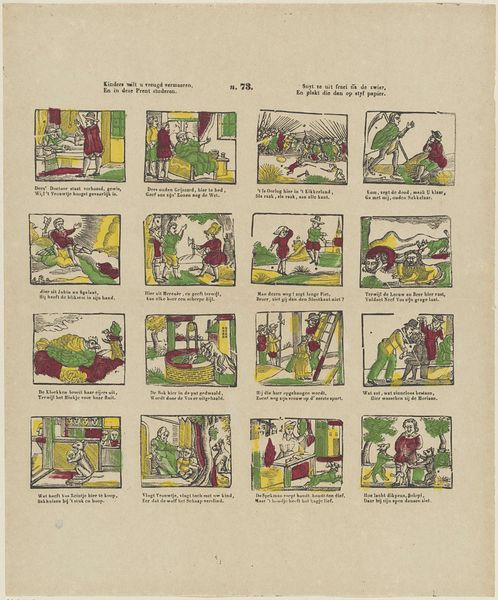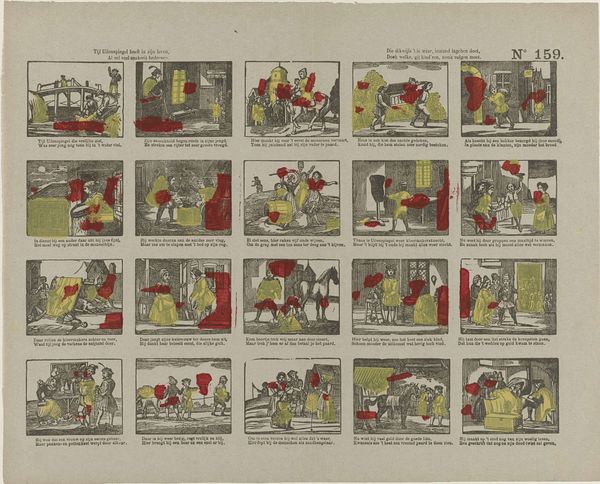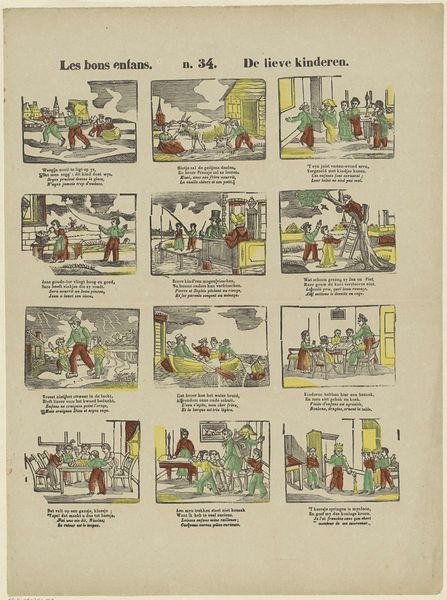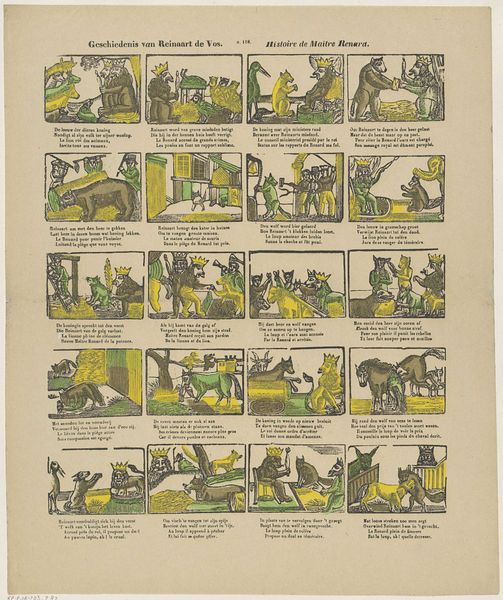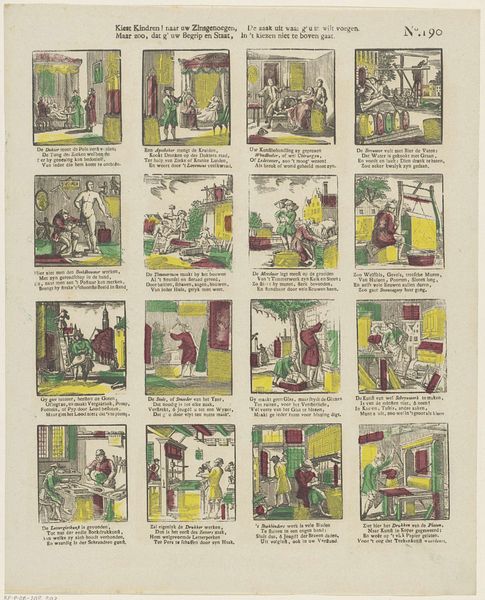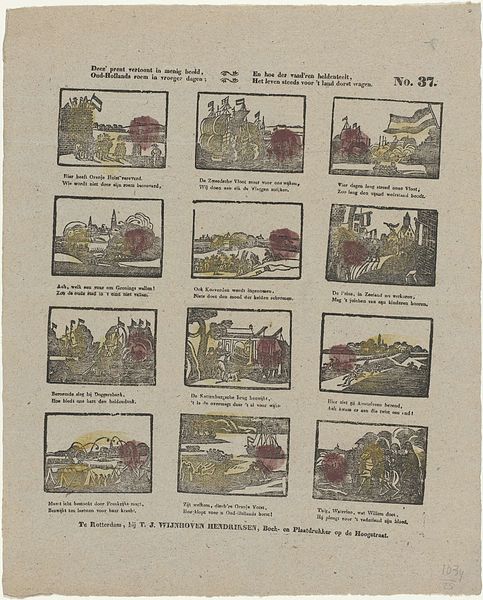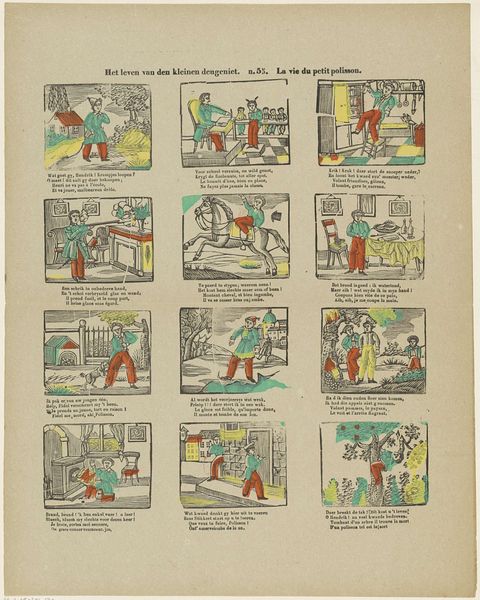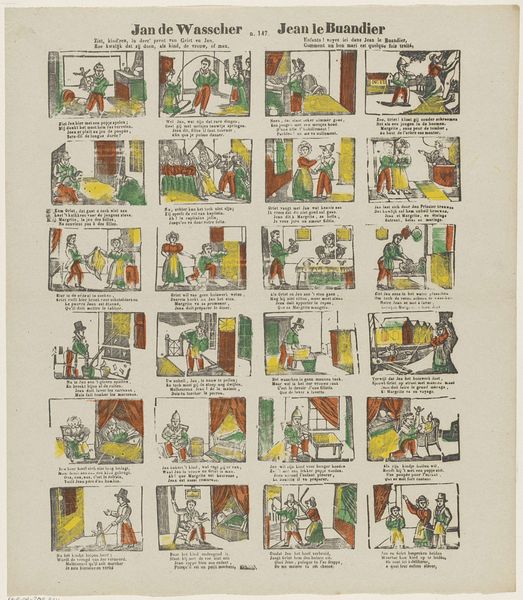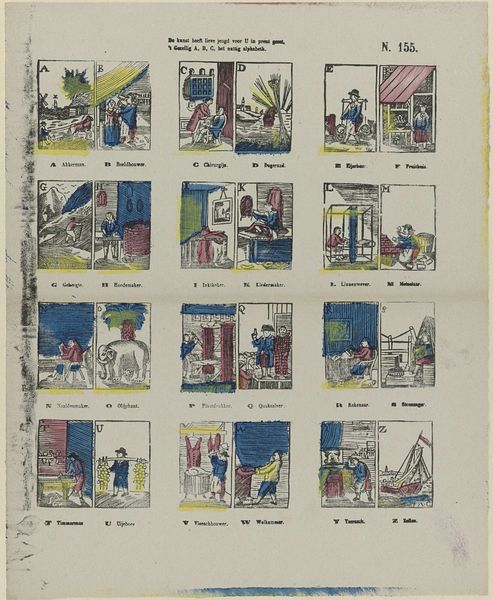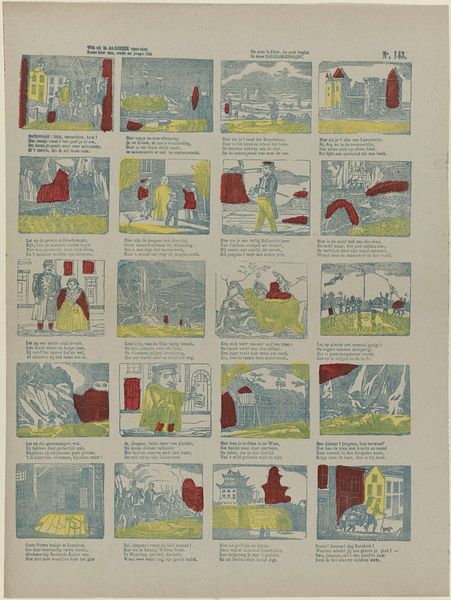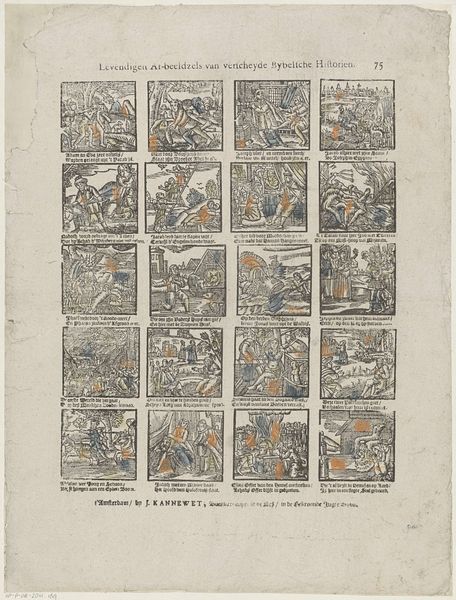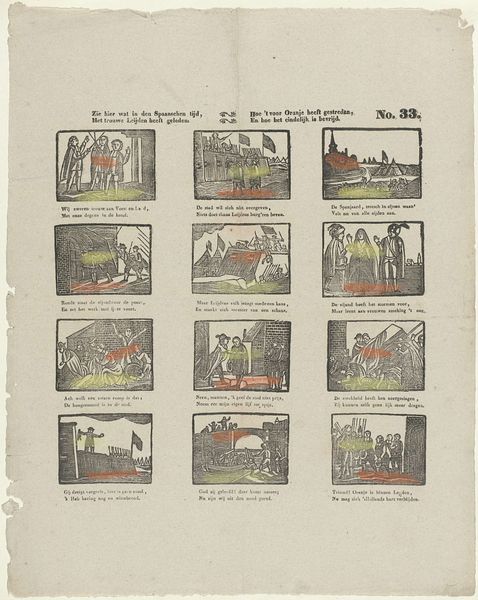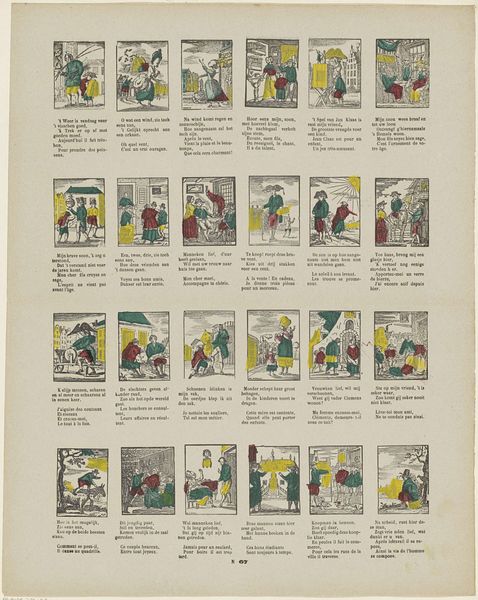
Roodkapje, kind'ren ! u bekend, / Wordt, bij vernieuwing, thans / U voorgesteld in deze prent, / Naar 't spreukje van de ans 1833 - 1870
0:00
0:00
print, woodcut
#
comic strip sketch
#
narrative-art
# print
#
folk-art
#
woodcut
#
comic
#
genre-painting
Dimensions: height 389 mm, width 329 mm
Copyright: Rijks Museum: Open Domain
Curator: This delightful, vintage-style print is titled "Roodkapje, kind'ren! u bekend, / Wordt, bij vernieuwing, thans / U voorgesteld in deze prent, / Naar 't spreukje van de ans," produced sometime between 1833 and 1870 by Glenisson & Van Genechten. It's a woodcut illustrating the story of Little Red Riding Hood. Editor: It strikes me as quite whimsical, with its charmingly naive use of line and colour. The layout reminds me of early comic strips. Curator: Exactly. Consider how it reflects the anxieties around female agency in the 19th century, a period when traditional gender roles were being challenged. Little Red Riding Hood's vulnerability as she transgresses social boundaries resonates with the era's anxieties regarding women's independence. The predatory wolf is the embodiment of patriarchal dominance threatening to swallow her whole. Editor: That's a fascinating take. Looking at the visual structure, I am struck by the simple geometry and bold colour-blocking used to define each panel. There is a balance between positive and negative space that's so appealing, creating a sense of visual harmony despite the gruesome tale. Curator: Furthermore, think about how the story’s moralistic framing of female curiosity—or rather, disobedience—and subsequent punishment through violence has contributed to a persistent culture of victim blaming and gender inequality. What implications has that for its young readership, then and now? Editor: You raise such an interesting point about its historical framing. The repetitive patterns—those stylized trees and the interior spaces—create rhythm and movement that carries our eye through each part of the story. The wolf appears both comical and terrifying by turn, does he not? Curator: Indeed, his ambiguity reinforces societal ambivalence toward male power and its abuse. Ultimately, “Roodkapje” reminds us that even fairy tales are never just innocent stories—they are reflections and instruments of cultural conditioning. Editor: After this short visit, I’ll look at cartoons much more critically from now on, and I admire all of those subtle and overt elements contained within those deceptively simplistic frames.
Comments
No comments
Be the first to comment and join the conversation on the ultimate creative platform.
